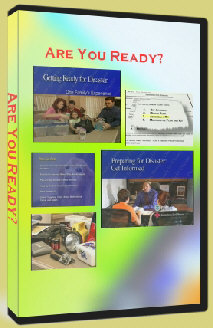Ellis Island is famous as that little island off of New York City where immigrants to the United States were processed. It has a very interesting and rather unique history.
Prior to the Revolutionary War, the island had many different names – including Kioshk (Gull) Island, Oyster Island, Dyre’s Island and Bucking Island. And after a group of pirates were hung on the island, it became known as Gigget Island. Read the rest of this entry »
Bill (William Jefferson) Clinton has led a colorful life. Here are some fun facts about his life and career.
As a child, he was given the nickname Bubba – a common southern nickname.
In high school, he played the Saxophone as part of a jazz trio called “Three Blind Mice.” His passion to play the sax continies to this day.
He graduated from Georgetown University in 1968 and from Yale University Law school in 1973. Read the rest of this entry »
Theodore Roosevelt was a very accomplished U.S. President. Here are some interesting facts about him.
- He graduated from Harvard College in 1880.
- He was Vice President under William McKinley
- His efforts brought about the treaty between the U.S. and Panama for creating the Panama Canal and setting it up to be under U.S. control. Read the rest of this entry »
Some of the saddest scenes shown by the news media after a disaster are the scenes where people talk about how they had to leave their family pet behind because there was no room in the rescue boat or helicopter or a place for them in the emergency shelter. What is more sad is that most of these heartbreaking stories could have been prevented if the people prepared an emergency preparedness plan for their pets (and themselves or course. For more info. check out our article your emergency preparedness kit for your family.)
Building an emergency preparedness kit for your pets is fairly simple and only requires a few things – many of which you probably already have in your own home. Your pet emergency kit should include:
- Food – Canned food is excellent as it has a very long shelf life but if your pet eats dry food, store an unopened bag in a waterproof container. Also keep an eye on the expiration dates so you can rotate the food out from time to time.
- Water – Be sure to keep a supply of clean water for your pet. Have a three day supply as a minimum in your pet emergency kit.
- Medicines/Records – If your pet is on medications or has a medical condition, be sure to include these in your kit. A copy of your pet’s records can be kept in the kit permanently but you may not have extra medicine to leave in there. In that case, put a big sticker on the top of the kit so when you need it you will remember to go back and grab the pet’s medicine.
- Pet first aid kit – Chances are you will not find one of these in the store so you will have to make one up yourself. As a minimum it should include cottoon bandage rolls, bandage tape, bandage scissors, antibiotic ointments, flea and tick prevention, isopropyl alcohol and saline solution and a pet first aid book. Your knowledeable pet shop owner or local veterinarian may make other suggestions.
- Pet carrier – The safest way to transport your pet is in a carrier designed for this purpose. While your pet may enjoy a ride in the car on your lap, keep in mind that during an emergency it will possibly be panicked and you do not need to be driving with a panicked pet. It is not safe for you or your pet.
- Collar with id tag and leash – It is important that your pet has identification on it and is kept restrained at all times during a crisis. This will keep it from being confused and wandering off. And if it does wander off, the id tag will help to reunite it with you.
- Comfort items – It is good to have a few favorite toys in the emergency preparedness package for your pets. Seeing and interacting with familiar play items/bedding will help them calm down.
Your pet is a part of your family. Take a little time to ensure its safety while you are taking the steps to ensure your safety in your emergency planning. Those few extra moments will ensure that you have the continued companionship of your pet during and after the emergency is over.
The assassination of John F. Kennedy happened on Friday November 22, 1963 in Dallas, TX. It occurred at 12:30 P.M. CST. He was fatally shot while riding with his wife Jacqueline in a presidential motorcade. The investigation of the assassination was conducted by the Warren Commission with the conclusion that Lee Harvey Oswald was the assassin – a conclusion still held in doubt by many in the world. In fact, the assassination of JFK is one of the biggest conspiracy theories that exist in our time.
Lets examine some of the facts surrounding the event
First, Kennedy came to Dallas for three main reasons: to generate more campaign funds for his 1964 presidential election; to begin his reelection bid; and to mend political fences among several key Texas Democratic Party members who would be needed to deliver Texas to Kennedy in the election.
Against this positive backdrop were concerns about safety in Dallas as recently Adlai Stevenson, United States Ambassador to the United Nations, was been jeered, jostled, struck by a protest sign, and spat upon during a visit to Dallas. And there was great concern amongst the members of the Kennedy contingent that an assassination attempt might be made. This was both in light of the fact of the unstable environment in Dallas at the time and the fact that the motorcade route was described in both Dallas newspapers on November 19, 1963, and a map of the route was published on November 21, 1963.
The motorcade traveled its route to an excited Dallas populace until 12:30 when the Presidential limousine turned and passed the Depository and continued down Elm Street where shots were fired. Many witnesses recalled hearing the shots but assumed that they were firecrackers at the time of the event.
Two shots were fired. The first shot entered Kennedy’s upper back and exited his throat. It also hit Governor Connally who was riding with Kennedy and his wife. The second shot took place as the limo passed in front of the John Neely Bryan north pergola concrete structure. This shot struck his head and did tremendous damage to his scull and brain and was the shot that eventually led to his death.
Kennedy was quickly brought to the Parkland Hospital and declared dead at 1 P.m CST. His death was officially announced by White House Acting Press Secretary Malcolm Kilduff at 1:33 p.m. CST.
A few minutes after 2:00 p.m. CST, Kennedy’s body was placed in a casket and taken from Parkland Hospital and driven to Air Force One.
Vice-President Johnson became President of the United States upon Kennedy’s death. At 2:38 p.m. he took the oath of office on board Air Force One just before it departed Love Field to Andrews Air Force Base.
The President’s body was then brought back to the White House for private viewing. On Sunday, his flag-draped closed casket was moved to the Capitol for public viewing. Hundreds of thousands lined up to view the guarded casket.
Representatives from over 90 countries attended the funeral on November 25. After the service, the casket was taken to Arlington National Cemetery for burial.
JFK had an amazing life that was tragically cut short. The documentary Years of Lightning, Day of Drums dramatically captures his accomplishments as President against the backdrop of his funeral. This moving film touches upon Kennedy’s hopes during his presidency and details the “Six Faces of the New Frontier”, the Peach Corps, the Alliance for Progress, Civil Rights, Space Exploration, Disarmament, the pursuit of peace, the Cuban crisis, the Berlin crisis, his journey to Costa Rica, his speech at the Berlin Wall and his visit to the Kennedy ancestral home in Ireland.
Visit http://www.thehistoricalarchive.com/categories/Presidents/jfk/index.html for a variety of films and audio recordings about JFK’s Presidency.

